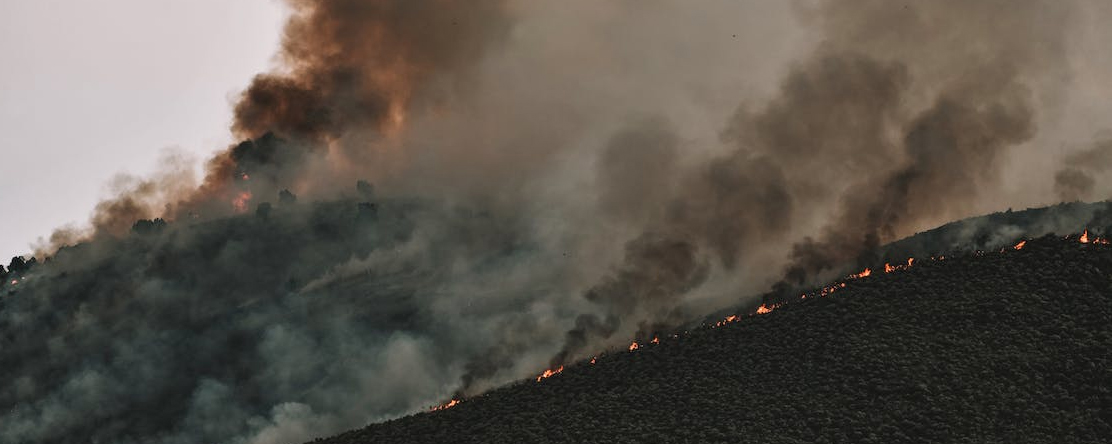
Report: Are California’s Local Health Departments Resourced to Address Climate-Driven Disasters?
- Bay Area Regional Health Inequities Initiative
Public Health Alliance of Southern California
Urban Resilience Strategies
-
Focus Areas
Capacity Building & Leadership, Environmental Health -
Issues
Climate Change, Population Health -
Expertise
Evaluation -
Programs
Public Health Alliance of Southern California

In California, wildfires, heatwaves and other climate-driven disasters are creating unprecedented challenges to human health and well-being. The impacts of climate-driven disasters are particularly severe for communities that experience health inequities—the systemic and unjust disparities in health outcomes that exist by race, income, neighborhood, language, immigration status and other factors. These communities are at greater risk of exposure to climate-related health threats, are more vulnerable to those threats, and have less access to the resources necessary to respond and recover effectively.
To address this crisis, a new type of health equity infrastructure needs to be designed for this new era of climate-related emergencies. California’s local health departments (LHDs) have an essential leadership role to play in fostering a more equitable, healthy, and resilient California.
Local Health Departments and Subject Matter Experts Address Climate Change Readiness in California: Findings and Recommendations, developed by the Bay Area Regional Health Inequities Initiative in partnership with PHI’s Public Health Alliance of Southern California and Urban Resilience Strategies, shows the way forward—providing recommendations that can help LHDs foster a more equitable, healthy and resilient California.
Health equity is at the core of our work and there is no question that there are equity issues regarding climate change and at-risk communities.Sacramento County
There is grassroots work going on, but public health needs to get more involved and do a lot of backbone support for community members.Marin County
As much work as we have done, we still need a good communications strategy, both internally and externally. How do we communicate these issues and have it be a priority and stay a priority?Tulare County
Key Findings on a State-Local Partnership Structure
The key findings about the aspects for a state-local partnership structure are based on the overall responses of 20 LHDs and five subject matter experts.
- Very few LHDs in California have staff working solely on climate change.
- Public health practitioners have widespread awareness and understanding of the link between climate change and health, and that climate change will exacerbate existing health inequities.
- Most interviewees agree climate change is an urgent issue with which local jurisdictions should be engaged, but a lack of resources impedes more active participation.
- There is a need to educate decision makers and elected officials on climate change and the health equity connection.
- Staffing is the primary factor cited by the departmental staff and senior leaders interviewed when asked about needed resources.
- Every LHD would benefit from securing sustained, multi-sectoral funding for climate change efforts, and allocations should be based on an equitable funding formula that takes into account population size, need, and climate vulnerabilities.
- Community engagement is a foundational component of LHDs’ climate change work.
- Elements of the state’s Tobacco and Nutrition Education and Obesity Prevention (NEOP) programs are useful models to consider as future planning proceeds.
- LHDs currently partner with other local government departments such as planning, public works, parks and recreation, and social services. Some collaborate with other partners including school districts, housing agencies, energy and utility departments and firms, the business and agriculture sectors, and chambers of commerce.
- Regional health department coalitions including the Bay Area Regional Health Inequities Initiative (BARHII) and the Public Health Alliance of Southern California (Alliance) as well as multi-sector climate collaboratives such as the Alliance of Regional Collaboratives for Climate Adaptation (ARCCA), are valuable in bringing people together to work on climate change, exchange information, and advocate for improved practices.
- There is almost universal support for evaluation being built into any future climate change impact and health program.
Climate change is a twelve on a scale of 1 to 10. It's the biggest public health issue we are confronting and almost no one is doing anything about it. Recent events should be a wake-up call that we should be doing this work.Linda Rudolph
PHI’s Center for Climate Change & Health
Talking about what’s going to happen in big jurisdictions has relatively weak traction. Talk about the difference between Malibu and a legislative district in Riverside or East L.A., and suddenly people start paying attention.Dr. Richard Jackson
retired, UCLA
Key Recommendations
A strong and sustainable partnership between CDPH and LHDs on climate change—one that values health equity—can strengthen the capacity of all LHDs to play a full, robust, and active role with local government colleagues and community partners to reduce climate, disaster, and health impacts and increase community resilience. To better realize this possibility, the project team recommends these five actions, culled from the stakeholder interviews:
Strengthen the capacity of LHDs to achieve community-developed health equity and resilience outcomes by identifying consistent, sustained fiscal and technical resources.
Climate change initiatives need resources appropriate to the challenges at hand in each LHD to achieve equitable, effective progress. Steady, long-term funding for staffing, technical assistance, and support for community engagement and community partners is imperative. Allocations should be based on a formula that takes into account population size, need, and climate vulnerabilities. With state and local partnership, an overarching program vision and goals can be implemented with adaptive, effective local variations.
Call for leadership from LHD directors, local health officers, and other senior leadership to prioritize climate change within their departments, across the local government organization, and in the community.
Elevate the role of the public health sector in local, regional, and state climate resilience planning and action to ensure that health equity and protecting vulnerable populations from climate change impacts is a “front-burner issue” in all adaptation implementation, as called for in local climate action plans, regional plans, and state climate laws, policies and regulations, including SB32 (2016) and Executive Order B-30-15. Executive leadership can play a stronger role in speaking up for the need for greater planning for climate adaptation and resilience within their departments, across government, and in the community.
Pivot on the teaching moment of California’s recent climate-driven disasters.
Disasters such as wildland fires, drought, extreme heat days, debris flows, and flooding provide salient moments for galvanizing community and regional action. The public health sector, often on the frontlines of addressing these disasters and helping vulnerable community members, can point to these events to help explain the need for additional support and resources for LHDs to work on climate change and improve health equity outcomes.
Integrate addressing climate change impacts and improved health equity outcomes into the mainstream of local government.
Incorporate climate resilience work into all LHDs and provide sufficient resources to accelerate local capacity to reduce community risk through public health and community-based networks that are often overlooked by other agencies. Encourage greater collaboration and participation by the LHD in interdepartmental efforts including Health in All Policies initiatives. Dismantle departmental silos and segmented approaches to community programs to improve health equity outcomes. The State could mainstream efforts to address climate change and improve health equity into contracts with local health departments through public health preparedness contracts or other existing programs requirements.
Ensure that collaboration and community partnership is a foundational activity for all as LHDs address climate change and support improved health equity activities.
Strengthen the local public health sector’s capacity to contribute to community resilience planning and practice. As trusted officials, public health practitioners can identify needs at the individual, institutional, and community level to improve resilience outcomes so that everyone does better after the next climate-driven disaster.
Work With Us
You change the world. We do the rest. Explore fiscal sponsorship at PHI.
Support Us
Together, we can accelerate our response to public health’s most critical issues.
Find Employment
Begin your career at the Public Health Institute.


